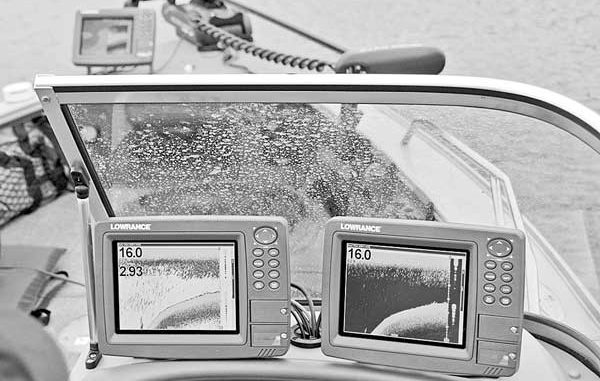
If a buddy goes to this August hotspot and tells you he didn’t catch any fish, he’s probably not telling the truth.
I seldom pass up an invitation to go fishing, especially from a friend with a new boat. Sometimes the invitation includes an opportunity to solve an electronics problem, but I don’t mind. It usually gives me grist for a column.My fishing buddy is a long-time Lowrance fan, and when he asked me which of the company’s units I liked best, I pointed out that most of the neatest new features coming in the near future were likely to be designed to network with HDS models.
So he ordered his new boat with a pair of HDS-5s, one on the console and one up front. Fresh from installing two HDS units on my test boat, I showed up at the dock with experience at operating their new menu system and an SD card with the latest software upgrade in my shirt pocket.
“The console unit only works on one frequency, and the screen picture turns into vertical lines when I go faster than trolling speed,” he told me as we left the dock.
This sounded odd, because both my test units worked perfectly right out of the box. We hit the water and, sure enough, he was right. My usual cures (returning to factory default settings and reloading the latest operating software) had no effect. I tried a full range of settings in each of the unit’s automatic operating modes and manual mode, but couldn’t get the unit to show any improvement.
I finally suggested that we try the bow unit (which hadn’t been turned on yet) on the console to find out if the trouble was in the unit or the console wiring.
We plugged the bow unit into the same connections and it worked perfectly. The first unit apparently slipped though the quality-control tests, and was bad out of the box. It can happen once in a blue moon with any manufacturer’s electronics, but I have to say this was the first time in almost 30 years of testing and writing about electronics that I’ve seen it happen with a Lowrance unit.
I updated the replacement unit’s software, and it still worked perfectly, so no problem there. The lost reading at high speed persisted, but an adjustment of the transom-mounted transducer fixed the problem. The boat dealer had mounted the transducer exactly right for a fiberglass boat, but, as usual, it had to run a bit deeper to work at speed on my buddy’s aluminum hull.
Having a second unit that could be plugged into the console position saved our fishing trip.
Professional tournament anglers and guides often run the same units at multiple positions or carry spares that are clones of their main electronics because they have to keep on fishing if something breaks. It isn’t unheard of for them to have an extra transducer installed with its cable run right to a unit, ready to be hooked up if necessary. Sometimes they run a unit with a larger screen on the console and a smaller one on the bow, but both will have the same keypads and operating systems and will use the same power and transducer plugs and mount bracket.
Keeping everything similar means you don’t have to shift mental gears when moving from one unit to the other, and the more capable that fish finders and sounder/GPS units become, the more you have to learn to get the most out of them.
Did I forget to mention that I caught a limit, and he didn’t on his new boat’s first fishing trip?


